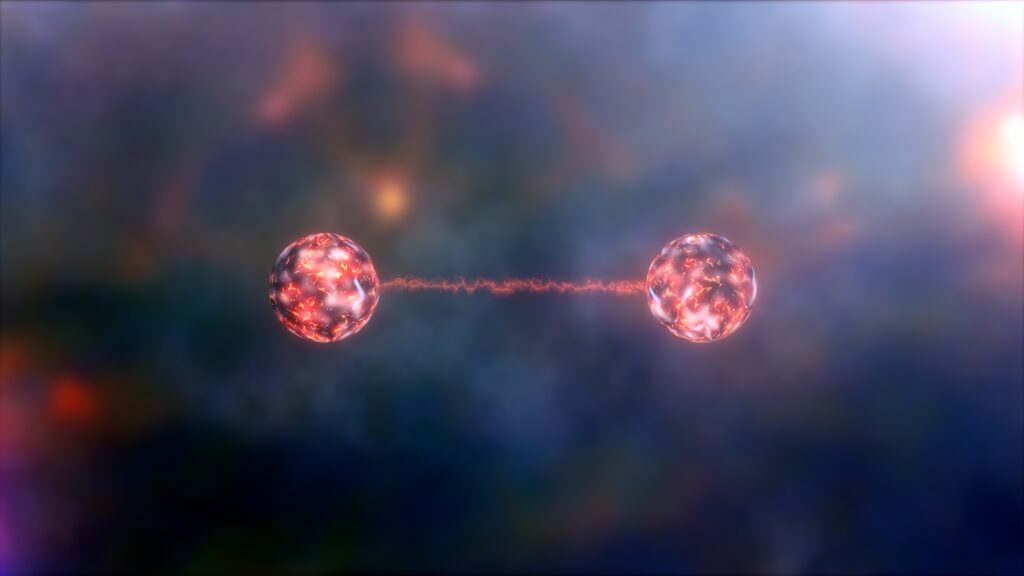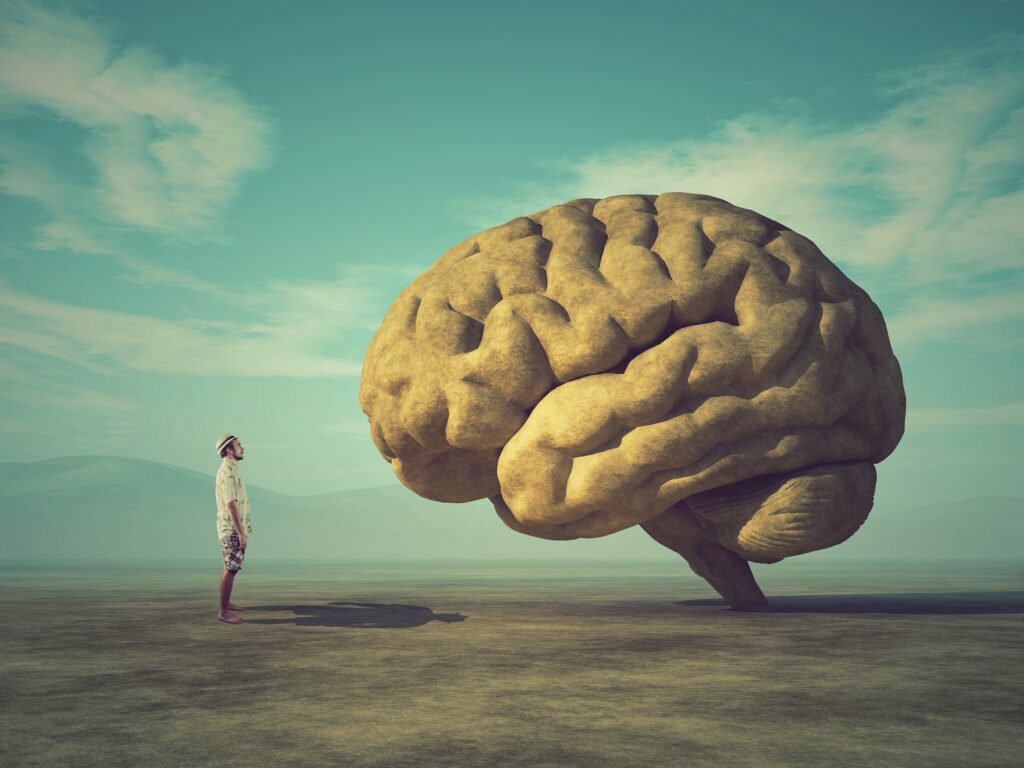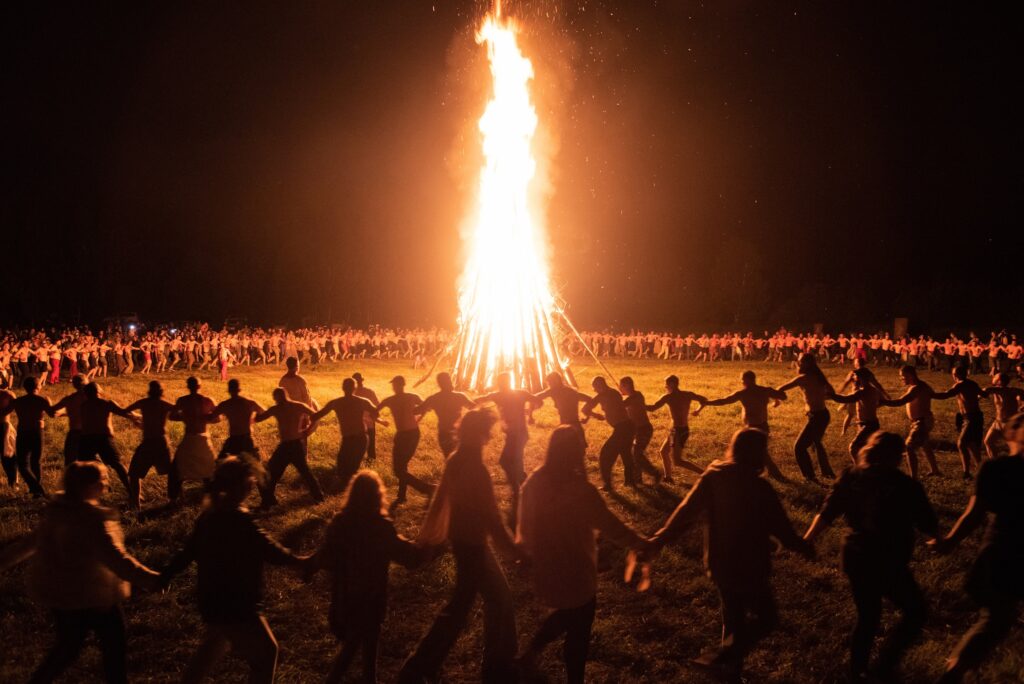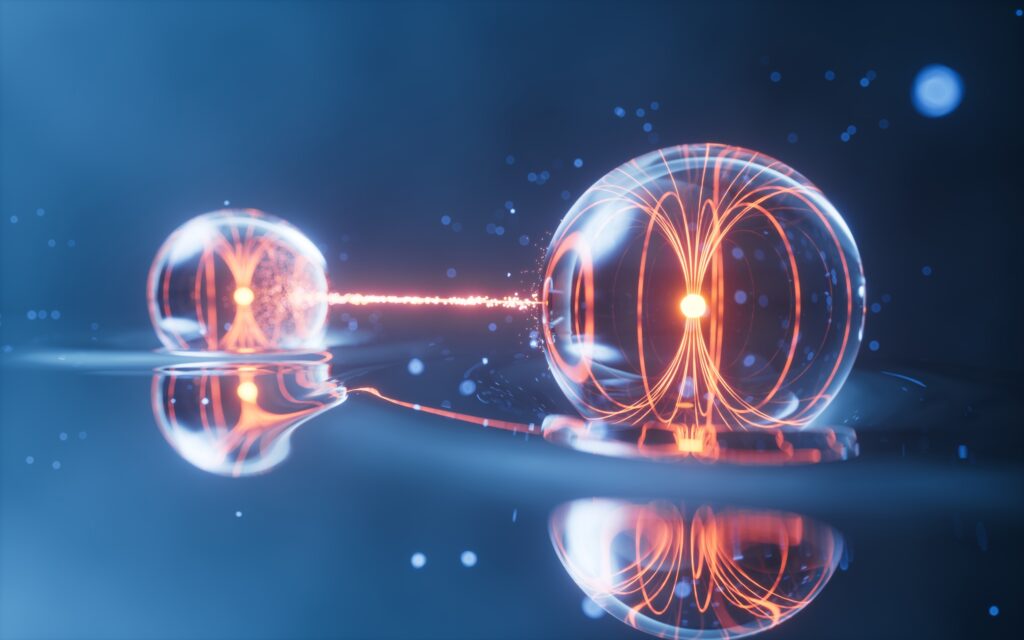The broad horizons of Ecstatic Naturalism
Reading | Metaphysics
![]() Asher Walden, PhD | 2024-08-04
Asher Walden, PhD | 2024-08-04
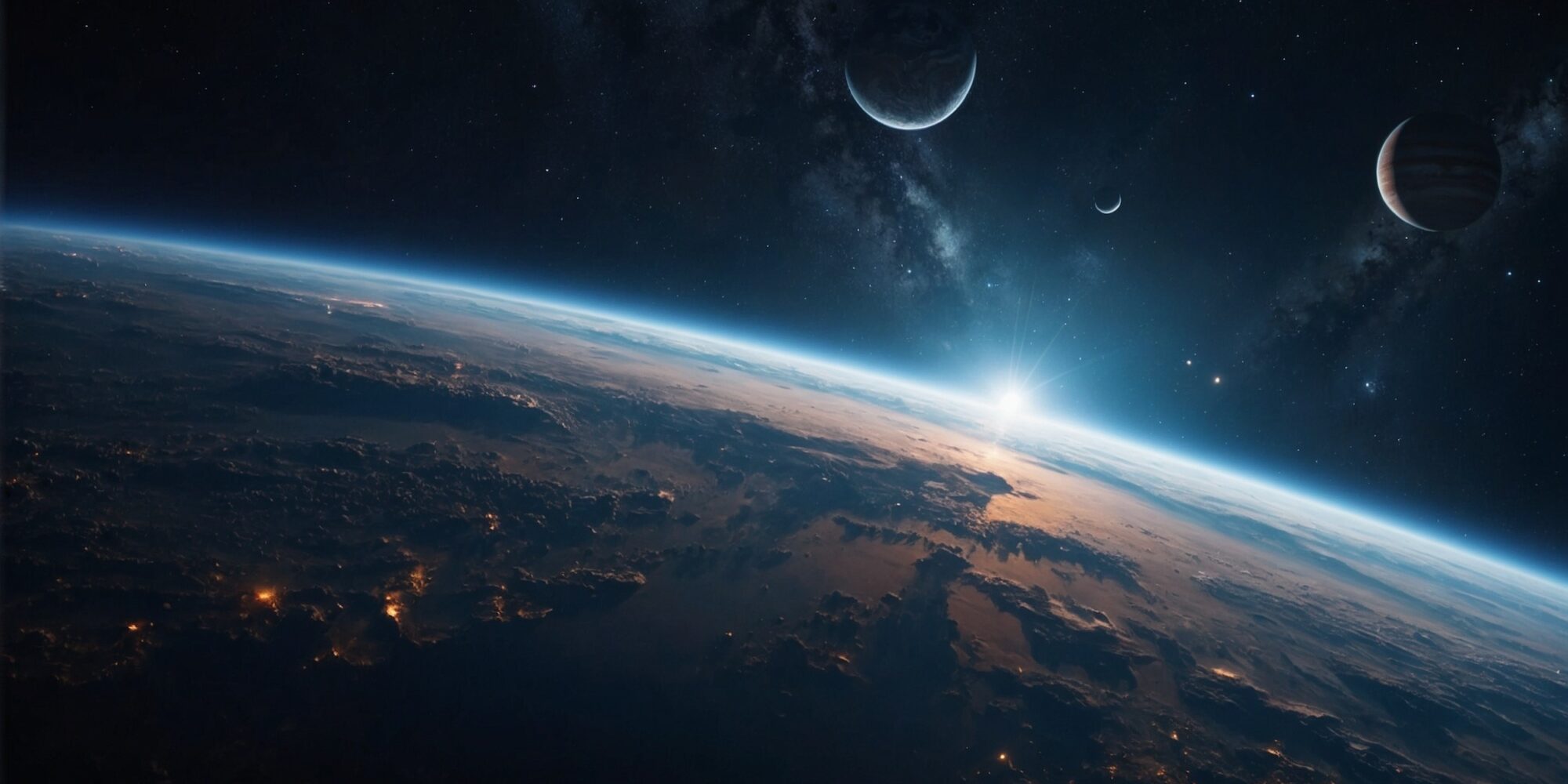
Dr. Walden introduces Ecstatic Naturalism, a metaphysics similar to Idealism but less committed to mind as we know it. While proposing that the archetypes—an eminently mental concept—serve as conduits to a fundamental layer of reality that is both transcendent and immanent in the so-called physical world and the human mind, it remains open to the possibility that such a layer may transcend our very understanding of what mind is.
Ecstatic Naturalism is a philosophical perspective based on the work of the contemporary philosopher and theologian Robert Corrington. In metaphysical scope, it sits side by side with Pantheism, Whiteheadian Panentheism, Panpsychism, and Analytic Idealism. Like many readers and authors associated with Essentia, it is committed to the idea of world philosophy, a modern approach to philosophical analysis that benefits not only from the Judeo-Greek traditions of Europe, but also Indian, Chinese, and even Shamanic traditions. Generally speaking, I see Ecstatic Naturalism as an attempt to formulate the most generic possible account of the foundational ideas that live at the heart of various historical forms of Non-Dualism. Corrington in particular has gradually incorporated more explicitly Theosophical and Advaita Vedanta perspectives, while my own approach is more heavily influenced by Neo-Confucian and Zen Buddhist perspectives, and so bears a closer affinity to the Kyoto School. My hope is that this approach will be of interest and benefit to the Essentia community. The purpose of this essay is to give a brief overview of some of the basic ideas of Ecstatic Naturalism, with some attention given to points of tension between EN and Analytic Idealism.
As in Kastrup’s work, the starting point is the division within nature between Nature Naturing (Schopenhauer’s Will, the Unruly Ground of Being, Nothingness) and Nature Natured (Schopenhauer’s Representation, beings, the innumerable manifested orders of the world) [Editor’s note: this is a translation of Spinoza’s natura naturans—the underlying organizing force that shapes the world—and natura naturata—the world as perceived by the senses]. The term ‘nature’ in Ecstatic Naturalism clearly refers not merely to the material world and its physical laws (which are part of Nature Natured), but to the entirety of what is. Nature is whatever is, in whatever way: from mountains and rivers, to chairs, tables and microwaves, to desires and dreams, to numbers and language, to dominions, powers, potencies and spirits, to the various orders, domains, horizons, and contexts within which any of the previous categories obtain. The basic idea is that nature is, really by definition, too vast in scope and diversity to be summarized by a neat ontological summary such as ‘everything is mind.’
In relation to the dizzying infinity of the contemplation of this nature, the ontological distinction provides the beginnings of a framework in which to orient ourselves. Consciousness as such plays a pivotal role, not just epistemologically, but metaphysically as well. The realms of Nature Natured are orderly, meaningful, and most of all, knowable. Thus, again by definition, Nature Natured is that which in principle can be known to beings such as ourselves. Following a trajectory laid by Kant, Schopenhauer, and Rorty, we can say that if it is knowable, it must be the kind of thing that can be known. And the only kind of thing that can be known is knowledge. It must be ideal or mind-y in substance. Thus, the basic orderliness of nature is that order ‘given’ to it by consciousness: space, time, and the categories. Ecstatic Naturalism does not say that mind is all there is (How could we know that?). But it does not rest at the edge of the Kantian precipice either. The primary way in which it moves past Kant, and even Schopenhauer, is by means of the betweenness structures that bridge the divide from Nature Naturing into Nature Natured.
These structures are the channels or modes by which the raw energies and potencies of Nature Naturing fuel, support, and generally pervade the orders of Nature Natured. We experience them as ‘ordinary’ things, relations, images, and events that are supercharged with emotional and metaphysical meaning and import. In other words, we experience them as sacred. A song, painting, or sunset is experienced (in a specific time and place) as not only beautiful, but intrinsically valuable. If the aesthetic and semiotic energy has ways to ground itself in the orders of the world in stable and anti-entropic ways, by means of good culture and good practices of integration, then they form a powerful wellspring of meaning, joy, and enlightened human community. If the psychic energy overpowers cultural or personal modes of integration, they may be not only destructive, but positively demonic.
Human consciousness stands at the border of the ontological divide. It is comparable to the location of the eye with respect to visual field. The eye has that which is in front of it, comprising all that can be seen. But the eye also has that which is behind it at any given time. Humans have a spatially-structured imagination, the mind’s eye, by which we can visualize that which is outside the visual range. Just so, the phenomenal self stands at the focal point between that of which it is or may be conscious (the orders of Nature Natured) and that which exists behind or beneath. But just as we have a visual imagination that allows a kind of epistemic access to that which is unseen, we also have a secondary self, a ‘higher’ or metaphysical self, which allows access to the betweenness structures that bridge the ontological divide. The ego self, or the ego dimension of the self, observes the icon, sunset, or purely imagined object in the ordinary fashion, while the deeper self experiences the flow of energy that takes the former perception as a channel or container.
Just as water takes the shape of the riverbed, pipe or glass that holds it, the sacred takes the shape of the phenomenal object that is then experienced as, and indeed is, sacred. Ecstatic practices (intensive meditation, drumming, lucid dreaming, active imagination, psychedelics, contemplative prayer, archery, etc.) train and attune the mind to deepen, stabilize, and open up these channels. Can any perceptual object be a container for the sacred in this way? Yes and no. Larger cups hold more water. The largest phenomenal containers for sacred energy are called the Archetypes. For this reason, the Archetypes provide the best available epistemic access to the character, potencies, and/or functioning of Nature Naturing.
To be clear, images of the archetypes are fully in and of Nature Natured. They are experienced in the familiar perceptual ways in which we experience things, relations, and events in the world as representation. Yet, when they become translucent to the intense light of Nature Naturing, they provide indirect clues about those aspects of the latter that are in some sense knowable to us. To the extent that they are knowable to us, just as in the case of ordinary objects of perception, they obey principles or logical laws that are ideal or mental in character. The archetypes are not structured by time, space and the categories, but they do have a logical structure of their own. That structure, in turn, gives us epistemic access to the human personal and collective unconscious. And insofar as the human unconscious is the non-local location of Nature Naturing within the human process, we have indirect access to the ‘how’ of Nature Naturing.
Images, icons and myths are not intrinsically sacred. Neither is the Unruly Ground of Being. Nature naturing is not God. Yet, when the human observer is appropriately situated with respect to the image, in the context of emotional and practical needs and desires that tend to pull the self into entropic disarray, the image may be experienced as sacred, pouring forth anti-entropic energies that are felt as not only spiritual in nature, but spiritualizing, lifting the self up out of the fully immanent travails of ego-based striving. But that numinous energy does not come from the image. Actually, it comes from the wellspring of Nature Naturing deep within of collective/cosmic unconscious, and is projected (in the familiar modality of psychic projection) into the object. So the ultimate source of the numinous is not the image, nor the (personal) unconscious, but Nature Naturing. The archetypes are the channel, the bridge that maintains a continuous logical structure in all these different orders: from the Unruly Ground, through the collective and then the personal unconscious, out into perceptual reality, then reflected back to the conscious self. Not just any shape, image, gestalt, or topology has the robustness to obtain in all these different orders—never mind maintain the internal cohesiveness to not only survive but bear the weight of such powerful psychic energy; the ones that do teach us about the relations between the different spheres. Thus, Ecstatic Naturalism allows for a greater refinement of our ontological apparatus. Instead of being limited to two basic parts of Nature, we also have the ability to categorize the archetypes into natural kinds, which in turn reflect the basic spheres or dimensions of how the energies and potencies of Nature Naturing become gradually condensed or crystalized into the orders of Nature Natured.
The shared mistake of Panpsychism and Idealism is to take human consciousness as the norm or standard, and then project that definition of (phenomenal) consciousness out into the rest of reality. This is the kind of anthropomorphism that makes those doctrines suspicious. Ecstatic naturalism argues that human explicit self-consciousness is one species of a much larger category. We can’t say much, or at least, not as much as we would like, about that broader category. We know what the colors of the visible spectrum look like. What would we say to someone who asked, what would microwaves look like if we could see them? We know about the kinds of interests and motivations that drive human life. As to other forms of life, the more distant they are from the human in environment and structure, the less capable we are of imagining them. We could say, as a matter of definition, that everything that is, is consciousness. But the price would be to admit that we only know what consciousness is in the human context. Thus, we could say that other powers and potencies that dwell within, and emerge from, the unruly ground of being are conscious in substance: but we would not know what that means. No doubt certain aspects of that singular plurality of consciousness would be more or less continuous with the energies that are funneled through the archetypes into human realms; but what about others? Thus, despite its very close affinity to Analytic Idealism, Ecstatic Naturalism remains methodologically committed to Jamesian pluralism.
Human consciousness is just an outpost or ordinal location of the Divine Mind. In some respects, each sentience is a ‘part’ of the cosmic mind, like so many distributed micro-processors in a single computational architecture. But in certain respects, the entirety of consciousness is present in any of its token locations (though not normally available to ordinary consciousness, thankfully—that would be very distracting). The relation between consciousness and the unconscious as it appears in the ontological divide on the one hand, and in the human mind on the other, does a lot of the heavy lifting. Humans can and do peel back the divide between the phenomenal consciousness of their external and internal life-world and the energies of the unconscious. The Archetypes are the channels by which those energies flow out from the unconscious of nature itself into the manifested orders of the world. Some percentage of those arrive within the human horizon; others, no doubt, land on other shores elsewhere, or shipwreck along the way.
Clearly, not all of reality is accessible to and for human consciousness. Just as our planet occupies a tiny and insignificant corner of one galaxy among billions, human consciousness is one tiny branch of the Great Tree that is Nature Natured in its inconceivable vastness. Nevertheless, it is a branch of that tree. How many archetypes are there? Countless. Do they depend on us for their existence? It seems unlikely. Yet, certain ones of them seem very closely tied to distinctively human processes, like childbirth, aging, teaching, and playing. To the extent that other animals, aliens, and discarnate transdimensional explorers participate in these same modes of being, they are dependent upon, and constrained by, the same archetypes that rule over the human realm. But what other archetypes rule over their worlds, or how, we cannot say.
Selected Works on Ecstatic Naturalism:
Corrington, Robert. Nature’s Religion. Lanham: Rowman & Littlefield, 1997.
Corrington, Robert. A Semiotic Theory of Philosophy and Religion. Cambridge University Press, 2001.
Corrington Robert. Deep Pantheism: Towards a New Transcendentalism. Lanham: Lexington Books, 2016.
Niemoczynski, Leon J. & Nguyen, Nam T. (eds.) A Philosophy of Sacred Nature: Prospects for Ecstatic Naturalism. Lanham: Lexington Books, 2014.

Essentia Foundation communicates, in an accessible but rigorous manner, the latest results in science and philosophy that point to the mental nature of reality. We are committed to strict, academic-level curation of the material we publish.
Recently published
Reading
Essays
Seeing
Videos
Let us build the future of our culture together
Essentia Foundation is a registered non-profit committed to making its content as accessible as possible. Therefore, we depend on contributions from people like you to continue to do our work. There are many ways to contribute.






